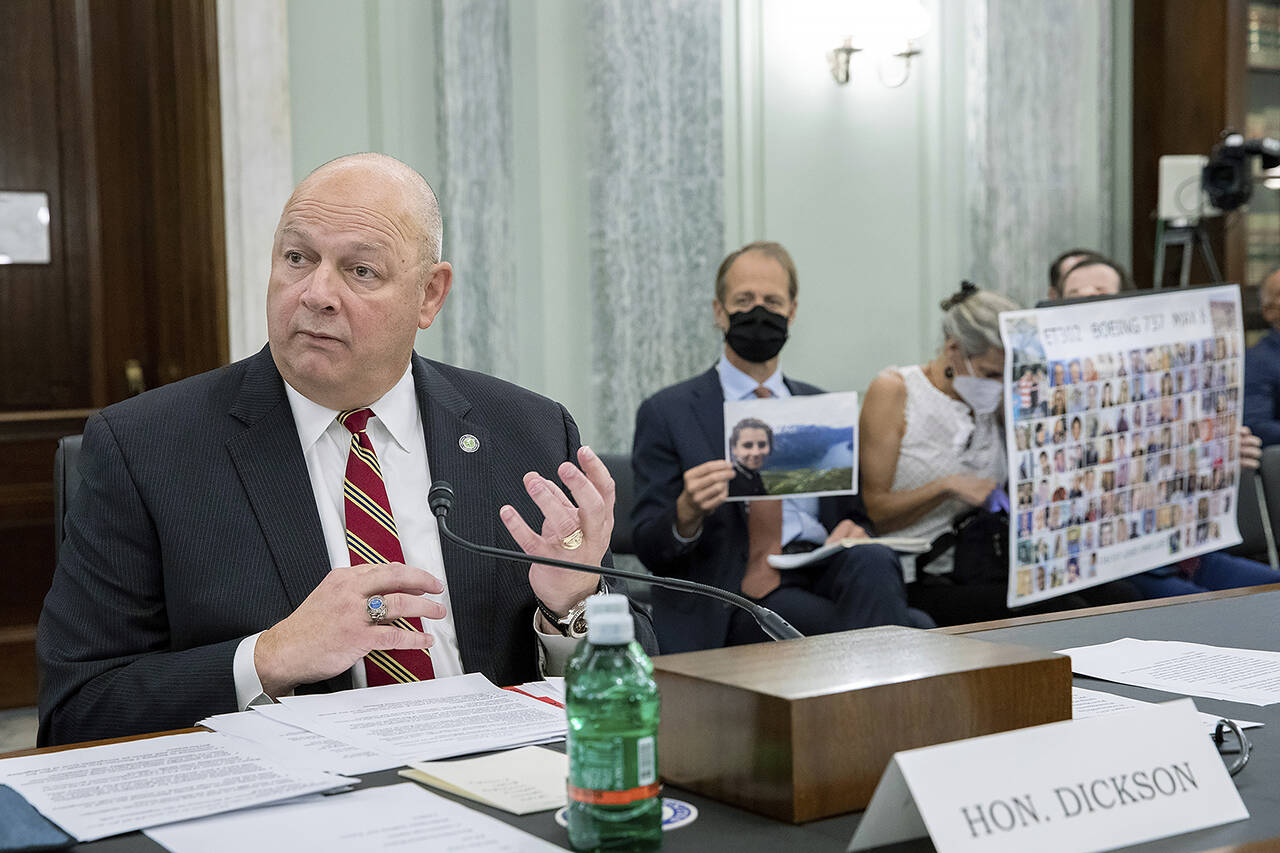By Dominic Gates / The Seattle Times
While Boeing is eager to put behind it the consequences of the two fatal 737 Max crashes, Democrats on the U.S. House Transportation Committee chaired by Rep. Peter DeFazio are pushing for more individual accountability for what went wrong at the company.
On Monday, DeFazio, D-Ore., and Rick Larsen, D-Wash., chair of the Aviation Subcommittee, asked Federal Aviation Administration chief Steve Dickson what actions the FAA has taken against individuals at Boeing responsible for two specific instances of apparent deception of customers and regulators during development of the Max.
“We are deeply troubled by the absence of rigorous accountability for Boeing’s past transgressions related to the 737 Max and the FAA’s failure to hold those who violated the public’s trust accountable,” the two wrote in a letter to Dickson.
The two cited instances are separate from those documented by the Department of Justice in its recent criminal indictment of former 737 Max chief technical pilot Mark Forkner.
The letter asks specifically for the FAA to go after others at Boeing who have not been publicly identified. The company declined to comment Monday.
Nonfunctioning crew alert let slide
The first issue cited relates to a Max flight deck alert designed to tell the pilots that the readings from the jet’s two angle of attack sensors disagreed. Boeing found out in 2017 that this alert was not functioning on the vast majority of Maxes. But it judged that the malfunction wasn’t a safety issue and decided not to fix it until a planned upgrade in 2020.
Boeing did not inform the FAA or its airline customers of the problem until after the first crash in late 2018.
DeFazio’s letter quotes former FAA acting Administrator Dan Elwell in 2019 stating that because this crew alert was approved as part of the Max’s FAA-certified design, “it was required to be installed and functional on all 737 Max airplanes.”
The letter points out that a Boeing engineer working as an authorized representative of the FAA “concurred with Boeing’s decision to delay the fix.” And “multiple individuals across the company were aware of this issue.”
“Boeing’s actions showed an utter disregard for the FAA’s regulatory process,” the letter states.
DeFazio and Larsen ask what the FAA has done “to hold Boeing accountable for deceiving its customers and violating the FAA’s regulations,” and specifically inquire whether that engineer “is still authorized to conduct work on behalf of the FAA.”
Effort to downplay MCAS
The second issue raised in the letter is an internal company meeting in 2013, the minutes of which detail “an explicit plan by multiple Boeing employees to downplay MCAS externally, including to regulators.”
MCAS — the Maneuvering Characteristics Augmentation System — is the flight control system that activated erroneously on the two crash flights and forced both planes into nosedives.
“If we emphasize MCAS is a new function, there may be a greater certification and training impact,” the minutes of that meeting noted.
Again, DeFazio and Larsen’s letter notes that “a Boeing Authorized Representative signed off” on the plan to downplay MCAS.
And it cites the committee’s interview in 2020 with the Chief Project Engineer on the 737 Max, Michael Teal, who testified that avoiding flight simulator training requirements for pilots was a “design objective” of the Max program.
This illustrates, the letter concludes, that “there were multiple efforts at Boeing from the top of the company on down that emphasized both the critical importance of avoiding flight simulator training as an FAA requirement and the fact that full and clear knowledge of MCAS by external parties, including regulators, could jeopardize that corporate goal.”
The letter asks what actions the FAA has taken to investigate the 2013 meeting.
“What, if anything, has FAA done to hold any of the individuals at Boeing accountable who took part in Boeing’s 2013 efforts to downplay MCAS?” the letter asks.
Specifically, it asks if the Boeing Authorized Representative who approved the plan is still authorized to conduct work on behalf of the FAA.
This renewed push for more accountability comes after Boeing came to a legal agreement this month with the families of those who died in the Ethiopian Airlines crash that laid out a process to settle almost all the claims.
That agreement covers almost all the outstanding claims against the company.
Meanwhile, the Max is back in the sky, with about 1,300 Max flights per day, according to FAA data.
As of the end of October, 207 of the 380 Maxes that had been delivered before the grounding were back in service around the world. And another 203 new Maxes had been cleared by the FAA to fly passengers.
Talk to us
> Give us your news tips.
> Send us a letter to the editor.
> More Herald contact information.

























